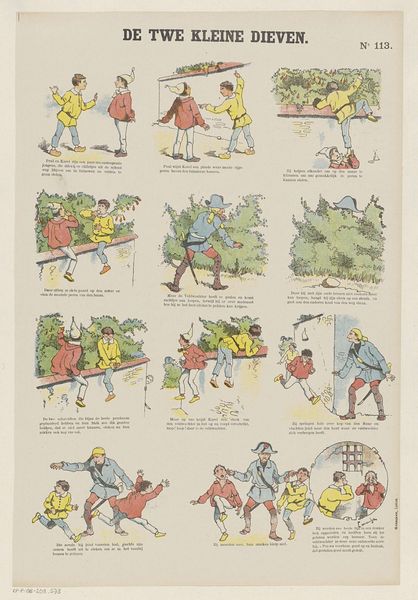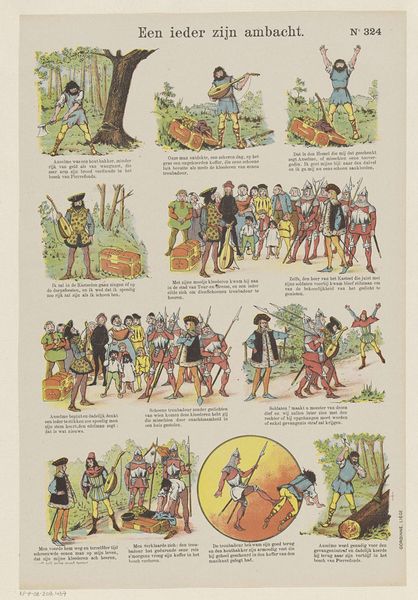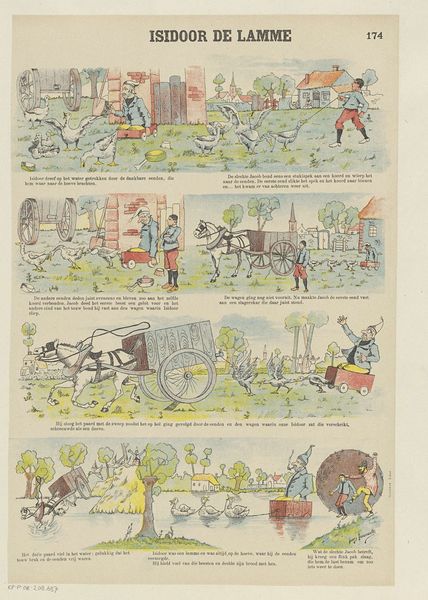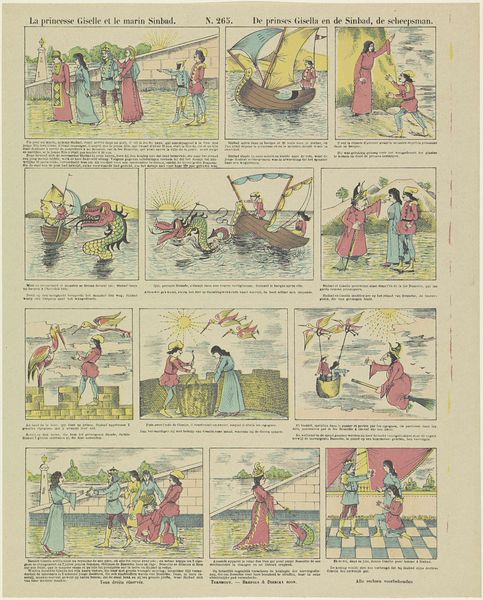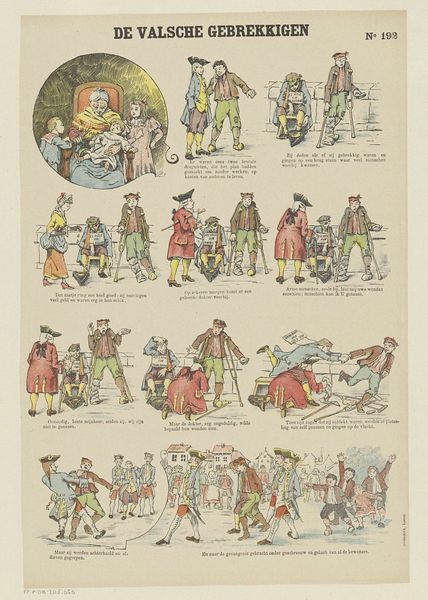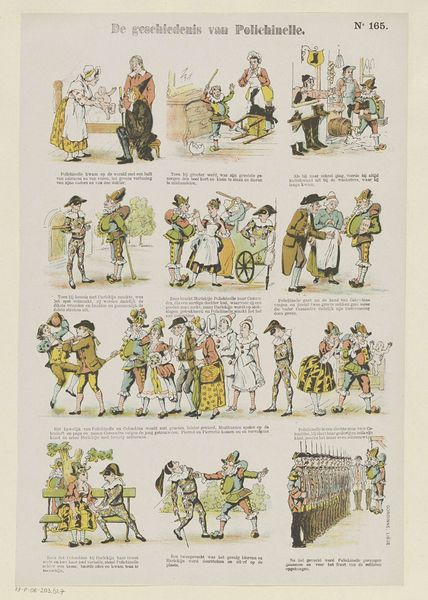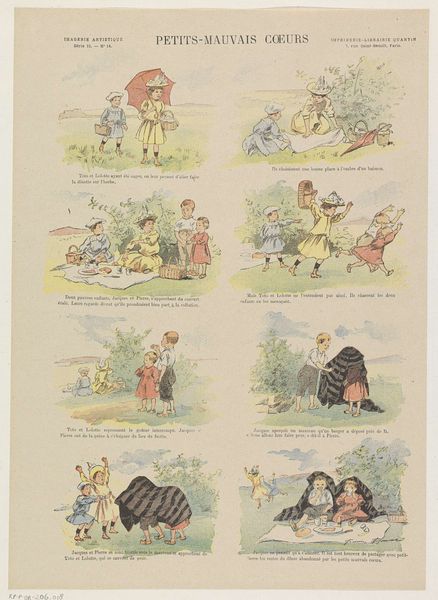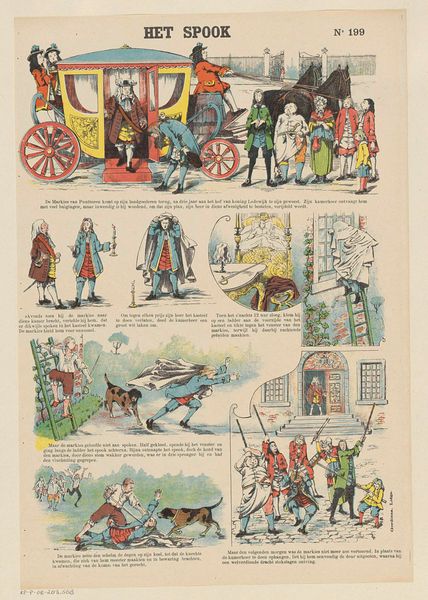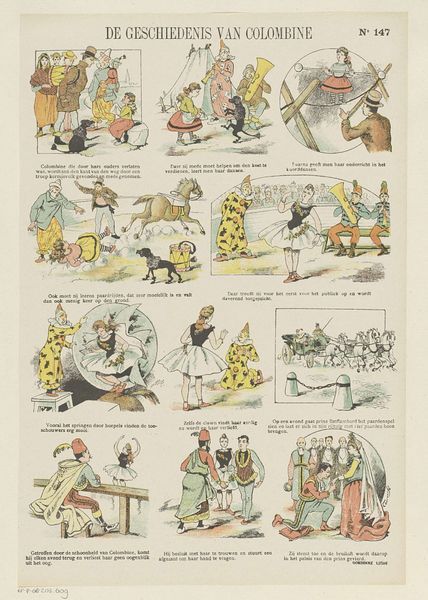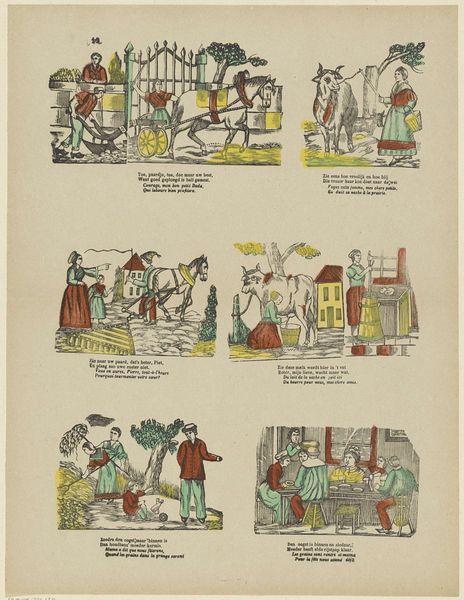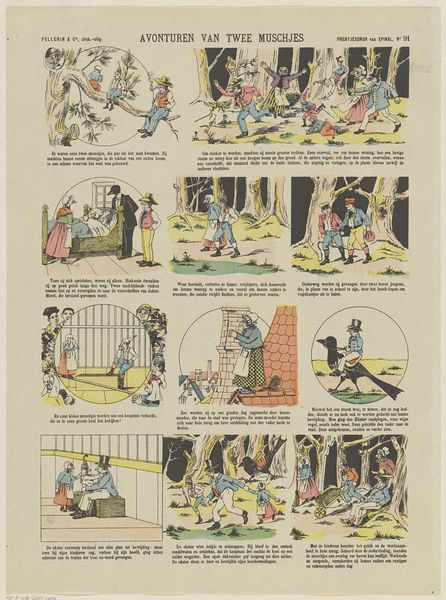
drawing, pen
#
drawing
#
narrative-art
#
caricature
#
figuration
#
ancient-mediterranean
#
comic
#
pen
#
cartoon carciture
Dimensions: height 399 mm, width 270 mm
Copyright: Rijks Museum: Open Domain
Curator: Well, here’s an interesting piece. What’s your initial take on "De kersen van den jongen Brutus," dating sometime between 1894 and 1959? It's currently held at the Rijksmuseum. Editor: A comic strip, almost! The scenes within circles and rectangles read sequentially, like frames. There's a playful quality but also something…didactic about it. It feels very moralistic. Curator: Exactly. Its narrative explores themes rooted in ancient Roman history and morality, all told through a sequence of comic panels, drawn with pen. I think that many who view the artwork now as an amusing caricature probably overlook the more solemn messages embedded within. Editor: Oh, absolutely. The attire, the architecture – it's drawing from a constructed Roman ideal. Note the recurrence of figures, such as the dark skinned character and how their representation carries meaning, reflecting and reinforcing stereotypes. Is this an allusion to power, justice, or…? Curator: Potentially both. The story depicted revolves around the young Brutus, and focuses on his clever attempts to trick or outsmart someone named Flavius, each scene depicting one of his cheeky escapades. Brutus’ story became iconic over time, illustrating that he was considered as an icon, and, through symbolic actions, showed he wouldn’t back down when needed. It's very much about the image one constructs. Editor: It really is. Given that the image employs narrative art, how might it engage or challenge conventional societal standards? What do you suppose would a modern audience gain from pondering "The Cherries of Young Brutus?" Curator: To consider how persistent, and problematic, those symbols are! Even something seemingly innocuous contains echoes, no? I can imagine some found great value and perhaps humor from identifying what can't necessarily be shown within political discussions and how the images are instead represented in other ways. It reflects the continuity in imagery across cultures and time. Editor: Yes, the work as a cultural mirror reflecting how society perceives morality and virtue, as filtered through visual symbols—still a relevant conversation, even today.
Comments
No comments
Be the first to comment and join the conversation on the ultimate creative platform.

